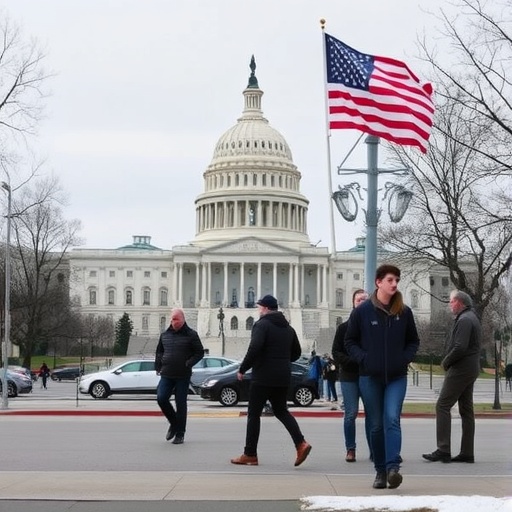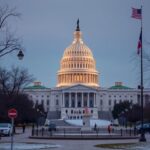In the heart of Washington D.C., as the government shutdown stretches into its third week, Federal employees are staring down a financial abyss. On day 21, over 800,000 workers remain furloughed without pay, while essential workers soldier on without compensation, their dedication tested by a deepening budget crisis that has paralyzed essential services across the nation.
This unprecedented standoff, born from a Congressional deadlock over funding priorities, has rippled far beyond the Beltway, affecting everything from national parks to air traffic control. Families are dipping into savings, food banks are overwhelmed, and the pressure on lawmakers to broker a deal has never been more intense. As one furloughed IRS auditor told reporters, “We’re not just numbers on a spreadsheet; we’re real people paying mortgages with credit cards.”
Essential Workers Push Forward Without Paychecks
At the forefront of this crisis are the essential workers—those Federal employees deemed critical to public safety and national security—who continue their duties unpaid. According to the Office of Personnel Management, approximately 400,000 of these dedicated professionals, including TSA agents, border patrol officers, and food safety inspectors, report to work daily amid the shutdown. Their resolve is admirable, but the toll is mounting.
Take, for instance, the story of Maria Gonzalez, a Customs and Border Protection officer in Texas. For 21 days, she’s inspected cargo at a busy port of entry, ensuring no illicit goods slip through. “I love my job, but my kids ask why there’s no money for groceries,” Gonzalez shared in an interview with local news. Without back pay guaranteed until the shutdown ends, many essential workers are turning to community support networks. The National Treasury Employees Union reports a 300% spike in assistance requests from its members since the furlough began.
Statistics paint a grim picture: The Partnership for Public Service estimates that essential workers are forgoing an average of $1,200 per week in lost wages. This isn’t just a paycheck issue; it’s a public health concern. At the FDA, inspectors are halting routine checks on imported foods, potentially allowing contaminated products to reach store shelves. “We’re doing the bare minimum to keep the lights on,” said Dr. Elena Ramirez, a senior FDA official, highlighting how the budget crisis is compromising long-term safety protocols.
Moreover, the psychological strain is evident. Mental health hotlines for Federal employees have seen a 150% increase in calls, with experts attributing it to the uncertainty of the Congressional deadlock. As one counselor noted, “These workers feel like pawns in a political game, and it’s eroding their morale.”
Furloughed Federal Employees Grapple with Mounting Financial Strain
While essential workers labor on, the other side of the coin involves the hundreds of thousands of federal employees placed on furlough—non-essential staff ordered to stay home without pay. The exact number hovers around 800,000, spanning agencies from the Department of Education to the Smithsonian Institution. This mass furlough, the longest since the 1995-1996 shutdowns, has triggered a cascade of personal hardships.
Consider Johnathan Lee, a 45-year-old economist at the Department of Commerce in Seattle. Furloughed since day one, Lee has watched his savings dwindle. “I applied for unemployment, but it’s a fraction of what I earn,” he explained. Like many, he’s juggling delayed bills: rent, utilities, and student loans for his two college-aged children. A survey by the American Federation of Government Employees reveals that 60% of furloughed workers have already maxed out credit cards, with 25% facing potential eviction.
The economic ripple effects are staggering. The Congressional Budget Office projects that the shutdown could cost the U.S. economy up to $11 billion in lost productivity by week’s end. Small businesses near federal installations, such as those around military bases, report a 20-30% drop in revenue as furloughed personnel cut back on spending. In Virginia alone, where federal jobs dominate the workforce, local food pantries have distributed 50% more meals this month.
Women and minority federal employees are hit hardest, according to a report from the Center for American Progress. Single mothers, who make up 15% of the federal workforce, are twice as likely to seek emergency aid. “This budget crisis isn’t abstract; it’s forcing families to choose between medicine and meals,” said Rep. Alexandria Ocasio-Cortez, D-N.Y., in a recent floor speech criticizing the Congressional deadlock.
Personal anecdotes abound: A National Park Service ranger in Yellowstone, furloughed and unable to visit her own workplace, shared on social media how she’s tutoring online to make ends meet. These stories humanize the statistics, underscoring the human cost of political inaction.
Congressional Deadlock Deepens the Budget Crisis
At the epicenter of this turmoil is the Congressional deadlock, where partisan lines have hardened over spending bills tied to immigration reform and disaster relief funding. House Speaker Nancy Pelosi has accused Republicans of holding the government hostage, while Senate Majority Leader Mitch McConnell insists on border security concessions. Negotiations, which collapsed last week, show no signs of restarting soon.
Key flashpoints include the $5.7 billion wall funding request from President Trump, which Democrats view as non-negotiable. “We’re willing to fund the government, but not at the expense of humanitarian aid,” said Sen. Chuck Schumer, D-N.Y., during a press conference. Meanwhile, Republicans point to the $25 billion in automatic spending cuts looming under sequestration if no deal is reached.
Experts warn that this budget crisis could spiral. The Bipartisan Policy Center notes that previous shutdowns averaged 21 days, but this one risks exceeding that, potentially triggering credit rating downgrades. “The longer it drags on, the harder it is to resolve,” said Bill Hoagland, a former Senate budget aide. Financial markets have already reacted, with the Dow Jones dipping 2% in the past week amid shutdown fears.
Lobbying efforts are intensifying. The U.S. Chamber of Commerce has urged swift action, estimating $300 million daily in economic damage. Veteran groups, affected by VA service disruptions, have rallied outside the Capitol, chanting “Pay our heroes.” Even international allies are watching closely; the shutdown has delayed U.S. diplomatic engagements, straining alliances at a time of global tensions.
Inside Congress, frustration boils. A bipartisan group of 50 House members introduced a clean funding bill, but it stalled in the Senate. “This deadlock is self-inflicted,” lamented Sen. Susan Collins, R-Maine, one of the few voices calling for compromise.
Shutdown’s Ripple Effects on Essential Services Nationwide
Beyond the personal plight of federal employees, the shutdown’s impact on essential services is profound and widespread. National parks, closed to visitors, have lost an estimated $500 million in revenue, forcing states to foot cleanup bills. At airports, TSA lines have lengthened by 20%, with understaffed essential workers facing burnout.
Public health is another casualty. The CDC’s ability to monitor disease outbreaks has been curtailed, with furloughed epidemiologists sidelined. In Flint, Michigan, ongoing water crisis response from the EPA is halted, leaving residents in limbo. “Essential services aren’t optional; they’re lifelines,” said Dr. Tom Frieden, former CDC director, in an op-ed.
Economic sectors feel the pinch too. The IRS, operating with skeleton crews, delays tax refunds—critical for 70% of Americans who rely on them. Small business loans through the SBA are frozen, stifling growth in rural areas. A study by Moody’s Analytics predicts a 0.3% GDP shave if the shutdown persists into February.
Environmental protections suffer as well. Clean Air Act enforcement is paused, allowing potential polluters a free pass. Wildlife refuges, managed by furloughed staff, risk poaching spikes. Communities near federal lands report increased illegal activities, from dumping to unauthorized hunting.
Children aren’t spared: Head Start programs, serving low-income families, face closure threats, affecting 1 million kids. “This budget crisis is robbing our future,” argued education advocate Randi Weingarten of the AFT union.
Yet, glimmers of resilience shine through. Volunteer groups have stepped up at closed monuments, and states like California are backfilling some federal grants. Still, the strain on essential workers remains acute, with reports of resignations rising 10% in high-stress roles.
Looking Ahead: Mounting Pressure for a Shutdown Resolution
As day 21 fades into memory, the path forward hinges on breaking the Congressional deadlock. Bipartisan talks are slated for next week, spurred by public outcry and economic warnings. President Trump has hinted at flexibility on wall funding, while Democrats signal openness to enhanced border tech investments.
Analysts predict a resolution within 10 days, but history suggests otherwise—the 2013 shutdown lasted 16 days before compromise. If extended, back pay for all federal employees is assured by law, but the interim damage could be irreversible. The Government Accountability Office warns of $2 billion in unnecessary costs already incurred.
Advocacy groups are mobilizing: A “No Shutdown Ever” coalition plans nationwide protests, targeting swing districts. Polls show 70% of Americans blame Congress equally, pressuring lawmakers to act. For federal employees and essential services, the stakes are clear—relief can’t come soon enough.
In the meantime, resources like the Federal Employee Education & Assistance Fund offer loans and counseling. As one essential worker put it, “We’ll keep showing up, but Washington needs to show up too.” The budget crisis has exposed fractures in governance, but it may yet forge a stronger consensus on fiscal responsibility.









